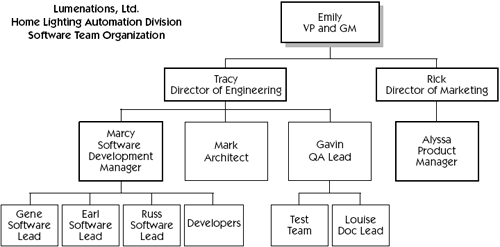Background for the Case Study
Lumenations, Ltd.Lumenations, Ltd. has been a worldwide supplier of commercial lighting systems for use in professional theater and amateur stage productions for more than 40 years . In 2002, its annual revenues peaked at approximately $120 million, and sales are flat. Lumenations is a public company, and the lack of growth in sales ”no, worse , the lack of any reasonable prospect for improving growth in sales ”is taking its toll on the company and its shareholders. The last annual meeting was quite uncomfortable since there was little new to report regarding the company's prospects for growth. The stock climbed briefly to $25 per share last spring on a spate of new orders but has since crept back down to around $15 per share. The theater equipment industry as a whole is flat, and there is little new development. The industry is mature and already well consolidated, and since Lumenations' stock is in the tank and its capitalization is only modest, acquisition is not an option for the company. What's needed is a new marketplace , not too remote from what the company does best, but one in which there is substantial opportunity for growth in revenue and profits. After conducting a thorough market research project and spending many dollars on marketing consultants , the company has decided to enter a new market, that of lighting automation for high-end residential systems . This market is apparently growing at 25 percent to 35 percent each year. Even better, the market is immature, and none of the established players has a dominant market position. Lumenations' strong worldwide distribution channel will be a real asset in the marketplace, and the distributors are hungry for new products. Looks like a great opportunity. The HOLIS Software Development TeamThe project for the case study is the development of HOLIS, our code name for an innovative new HOme LIghting automation System to be marketed by Lumenations. The HOLIS team is typical in terms of its size and scope. For the purposes of our case study, we've made it a fairly small team, only 15 team members , but it's large enough that all of the necessary skills can be fairly represented by individuals with some degree of specialization in their roles. It's the structure of the team that's most important, and by adding more developers and testers, the structure of the HOLIS team scales well to a size of 30 “50 people and commensurately larger software applications than HOLIS will require. To address the new marketplace, Lumenations has set up a new division, the Home Lighting Automation Division. Since the division and the technology are mostly new to Lumenations, the HOLIS team has been assembled mostly from new hires, although a few team members have been transferred from the Commercial Lighting Division. Figure A-1 is an organization chart showing the development team and the relationships among the team members. Figure A-1. The HOLIS software development team |
EAN: N/A
Pages: 257
